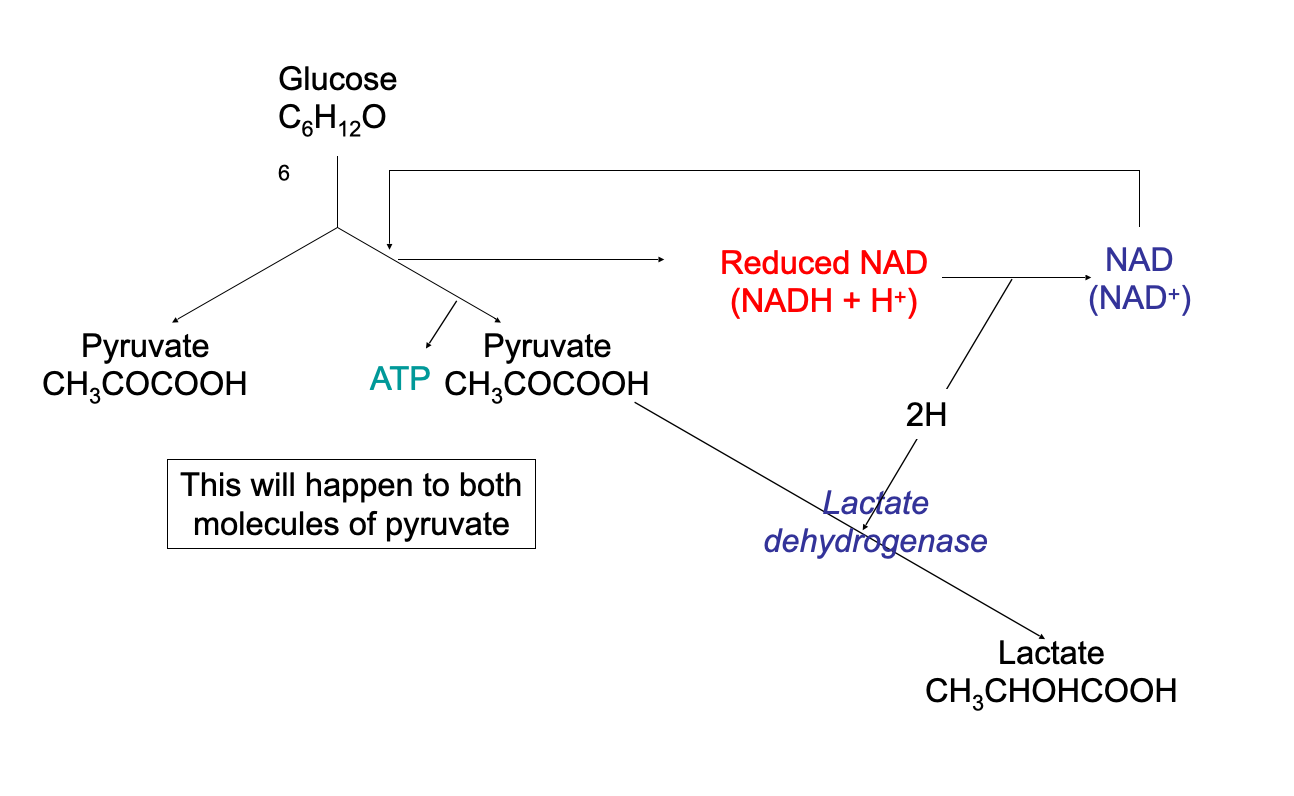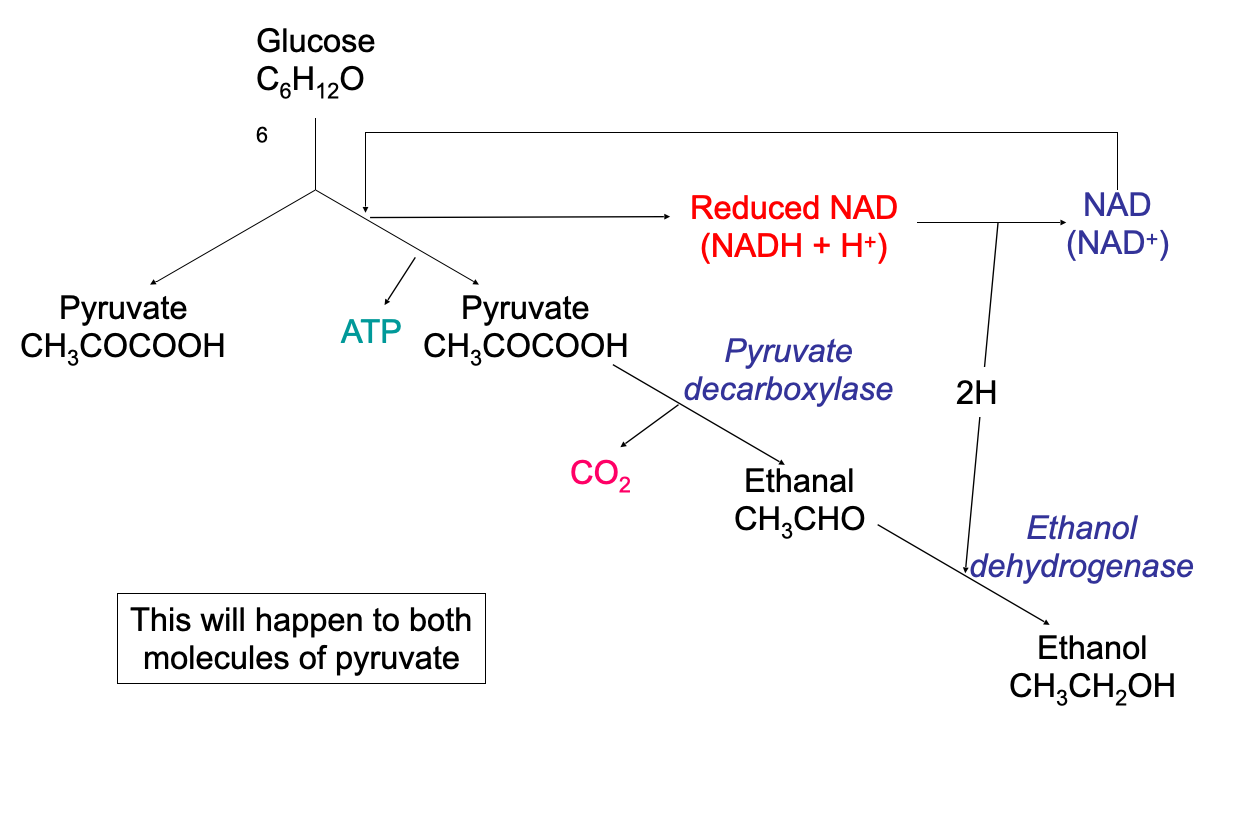18.7 anaerobic respiration
anaerobic respiration
acts as emergency measure for ATP production when oxygen levels low bc doesn’t require oxygen
involves glycolysis
at end will have:
2 ATP, 2 reduced NAD + 2 pyruvate
need to oxidise nas to allow dehydrogenation reactions in glycolyiss to continue to allow (some) ATP to be produced by substrate level phosphorylation
2 types anaerobic respiration
in mammalian muscle + in yeast (and some plant cells)
categories of organisms based on oxygen requirements for metabolic processes
obligate anaerobes - cannot survive in presence of oxygen
facultative anaerobes - switch between aerobic + anaerobic respiration, depending on oxygen availability.
obligate aerobes - depend on oxygen to synthesise ATP
eukaryotic cells can perform either type of respiration depending on situation
alcohol fermentation and lactic acid fermentation
anaerobic conditions: cells can produce small yield of ATP (glycolysis). can only continue if reduced NAD produced can be oxidised again
link reaction + Krebs cycle cannot continue if all FAD + NAD are reduced bc they cannot accept any more protons + electrons.
oxidative phosphorylation cannot occur w out oxygen bc final electron acceptor
2 major pathways through which cells can undergo anaerobic respiration: alcohol fermentation + lactic acid fermentation.
If too much anaerobic respiration occurs in muscle tissue, the reduced quantity of ATP produced is insufficient to maintain vital processes for extended time periods. This means lactic acid accumulates, causing cramp and muscle fatigue, and it also reduces the pH affecting enzymes.
some animals muscles + bacteria w out oxygen: lactate fermentation

glycolysis occurs → pyruvate, 2 reduced NAD + 2 ATP by SLP
pyruvate (final electron acceptor) accepts electrons (hydrogen) from reduced NAD + reduced to lactate by lactate dehydrogenase
NAD (re)oxidised so can accept ↑ electrons(hydrogen) from dehydrogenation reactions in glycolysis
thus glycolysis can continue + produce small amount of ATP
yeast and some plants w out oxygen: alcohol fermentation

glycolysis occurs → pyruvate, 2 reduced NAD + 2 ATP by SLP
pyruvate decarboxylated releasing CO2 + produces ethanal (catalysed by pyruvate decarboxylase)
ethanal accepts electrons (hydrogen) from reduced NAD + reduced to ethanol by ethanol dehydrogenase
NAD (re)oxidised so can accept ↑ electrons(hydrogen) from dehydrogenation reactions in glycolysis
thus glycolysis can continue + produce small amount of ATP
comparing anaerobic respiration
yeast and plants | mammals | aerobic respiration | |
final electron acceptor | ethanal | pyruvate | O2 |
CO2 produced | 2 yes | 0 no | 6 yes |
ATP produced per glucose molecule | 2 (SLP) | 2 (SLP) | 30 (SLP + chemiosmosis) |
end product | 2 ethanol + 2 CO2 | 2 lactate | 6 water + 6 CO2 |
stages | glycolysis | glycolysis | glycolysis link krebs oxidative phosphorylation |
reversible | no | yes | no |
where occurs | only cytoplasm | only cytoplasm | cytoplasm + some steps in mitochondria |